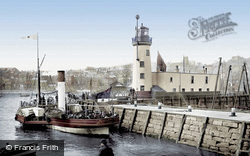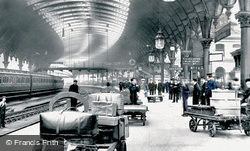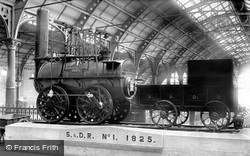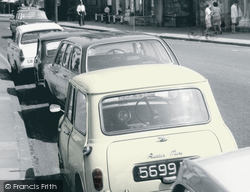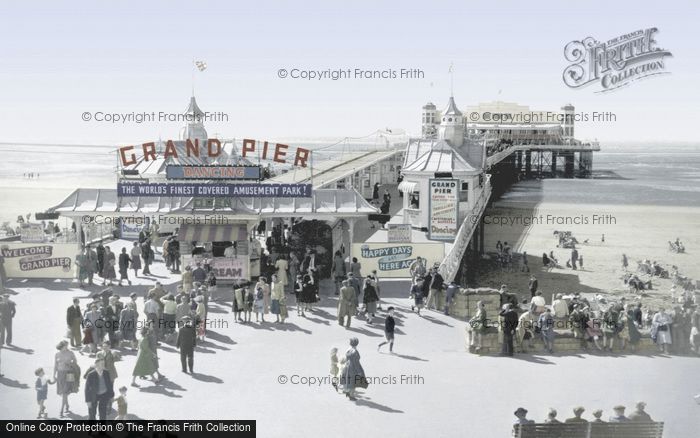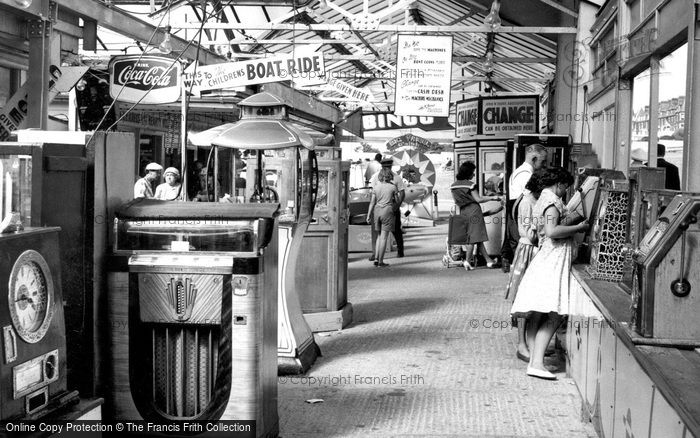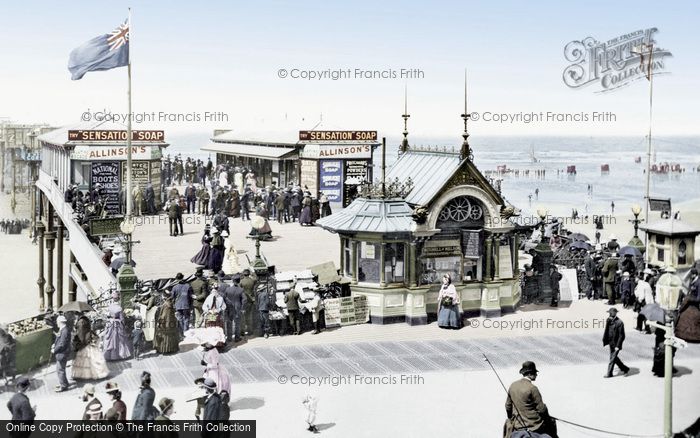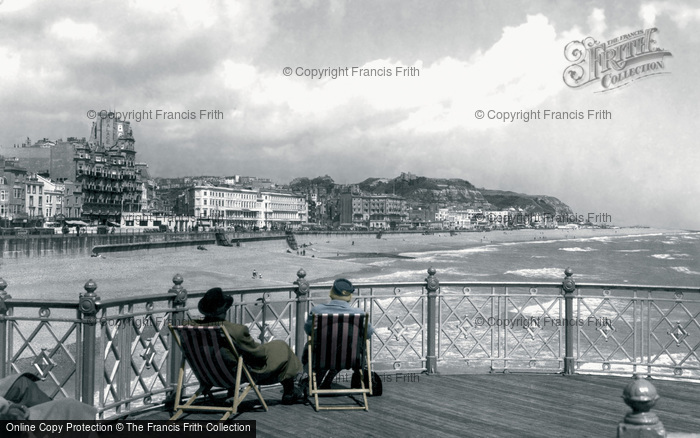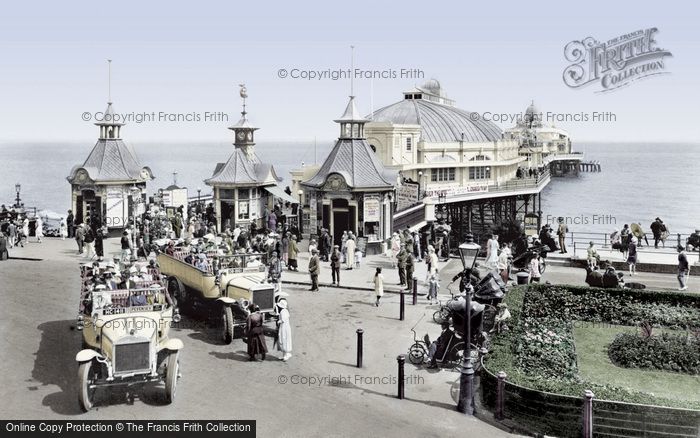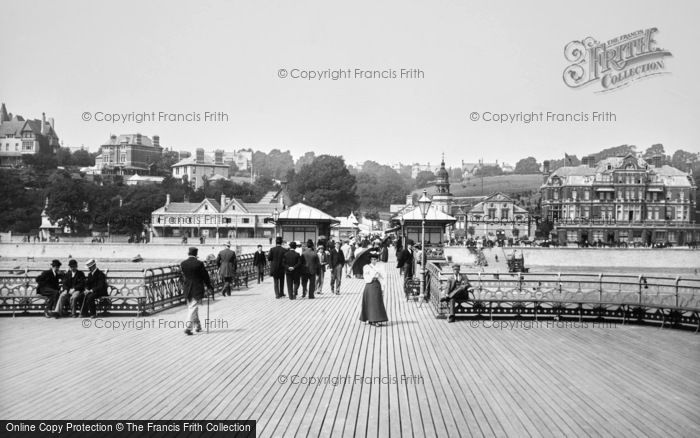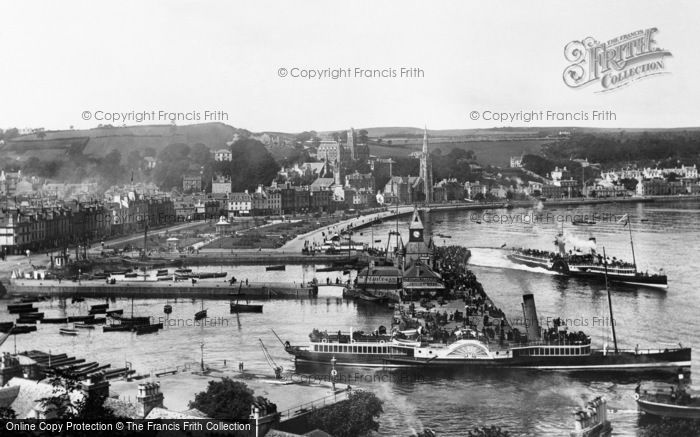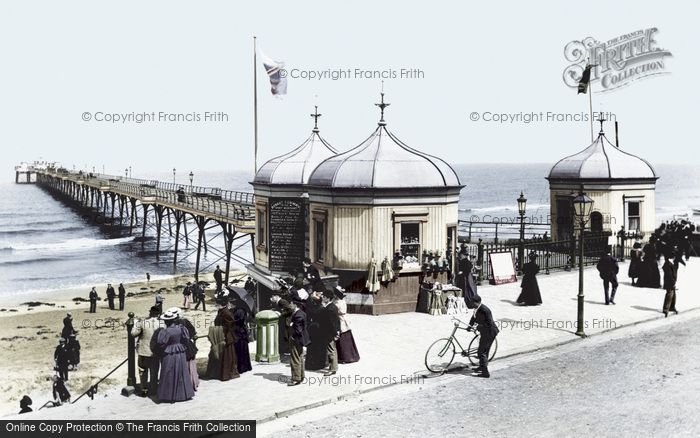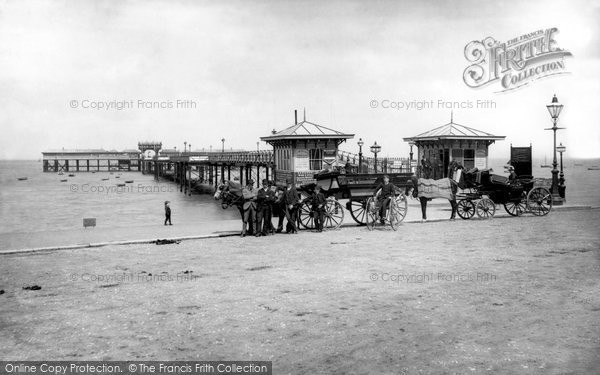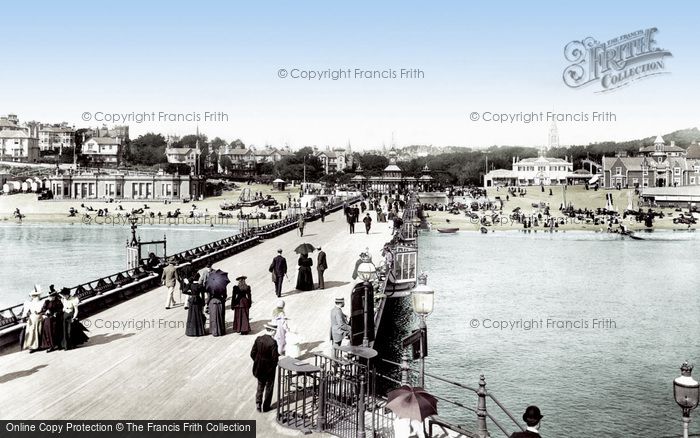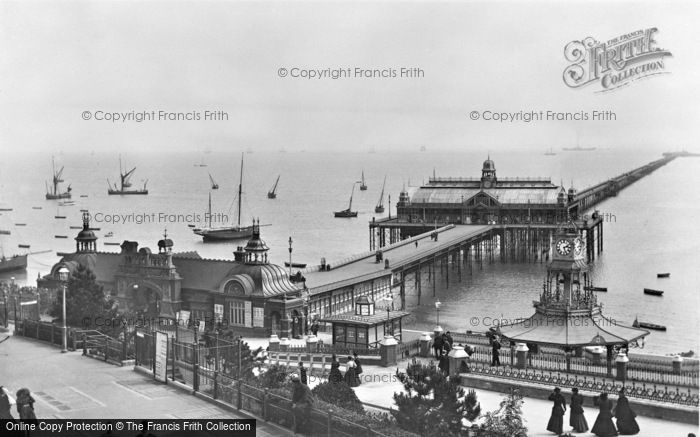The Great British Pier
Published on
July 14th, 2025
Since the mid-1800s, the seaside pier has been at the heart of the traditional British family holiday: memories of promenading fashionably along the boardwalk glancing down at the rushing, cold sea below, or playing the slot machines in the pleasure palace; or enjoying the sights and sounds of the funfair, and indulging in sticks of peppermint rock, candy floss and fish and chips. How glorious!
Devastated by fire in 2008, the Grand Pier at Weston-super-Mare was reconstructed and re-opened to the public, and represents the affection inspired in us all by the great British pier! The pavilion was actually destroyed by fire once before in 1930, but was replaced in 1932-33. This new construction was arguably the biggest single building put up on a pier in the inter-war years, though it never housed a theatre it was home to a large fun fair instead.
Hunstanton Pier opened on Easter Sunday 1870. Sad to say, a fire on 11 June 1939 destroyed the pavilion, which was never replaced. After 1945 the pier was used by roller-skaters, and it had a small zoo. The Ealing Comedy "Barnacle Bill" (called "All at Sea" for the American market) starring Sir Alec Guinness was filmed here in 1956. Post-war attractions on Hunstanton pier included bingo, rock stalls, waxworks, acrobatics and skating. Most of the Pier was swept away during the gales of 1978, and it was finally burnt down in May 2002 when flames destroyed a three storey building at the entrance to the pier.
The "People's Pier" opened in 1868 as the South Pier, then changed its name to Blackpool Central when the Victoria (now South) Pier opened. Its fervent popularity was due to the vast range of amusement activities on offer including a roller-skating rink, a joy wheel, a ""guess-your-weight"" machine and photo booth, but most particularly for its dancing. A more genteel pier would not have been so covered in advertisements!
The pier at Hastings opened in 1872, and was another designed by Eugenius Birch. It was originally some 900ft long ?- a dramatic structure for strolling along (it would have cost you 2d to walk to the pierhead) and for seaside entertainments. Whilst the majority of the pier is open, its long-term future remains uncertain.
Designed by Eugenius Birch, Eastbourne pier opened in 1870. Its first theatre seated 400, and cost a mere £250 - it eventually became a cattle-shed at Lewes! The saloons visible here halfway along the decking were added in 1901, the same year that work on the new pavilion was completed. The year 1925 marked the building of a new 900-seater music pavilion at the shoreward end of the pier. By this time, coach (or charabanc) traffic was having an impact, bringing visitors to sample the pier's delights. We may be thankful that although a later entrance building was wrecked by fire, both the older theatre and music pavilion seen in this photograph can still be seen today, and the pier remains successful.
When the 650ft-long pier opened in 1895, it was very plain, with little in the way of leisure facilities other than the refreshment room, florists and weighing-machine seen here. A large shoreward end pavilion was not added until 1927-28, and a concrete landing stage was built at the same time.
A pier was an essential requirement of every Victorian seaside resort of note. Many seaside piers originally began as landing stages for pleasure steamers bringing excursionists to the resorts by sea, as seen here at Rothesay on the Isle of Bute in Scotland, a favourite holiday destination for Glaswegians; however, piers soon evolved into places with a true pleasure function, where visitors could enjoy a concert and other entertainments, promenade above the waves, or simply sit and watch the crowds flow by. Thrusting out into the sea, they encapsulated the Victorian passion for exotic feats of engineering. Sadly, many of the 19th-century piers that featured in the Frith photographic archive since it began in 1860 have not survived the ravages of time and tide, and the Frith photos now form a nostalgic record of these now-lost architectural treasures.
After the opening of the Middlesborough to Redcar Railway in 1846, Redcar became a favourite seaside resort for Victorian tourists, famous for its magnificent sweep of sands. This beautiful pier at Redcar opened in 1873; it was constructed by Head Wrightson, an engineering firm from nearby Stockton-on-Tees with a national reputation. Pleasure cruises used to run from a small landing stage, but a colliding ship wrecked this in 1885. The pier originally measured 1,300 feet long but it was a victim of sectioning during the Second World War. Mine and storm damage during the war meant that the long neck was then removed, leaving Redcar with a pier that measured just 45 feet beyond the pavilion. Eventually this too was demolished in the 1980s.
Morecambe once had two piers. The Central Pier, seen here, opened in 1869 but fell into disrepair in the second half of the 20th century and was demolished in 1992. Here we see a group of men posing at the pier entrance next to carriages waiting to take visitors to the resort along the seafront or on excursions to the nearby inland villages of Bare and Torrisholme. One of them is riding a curious two-wheeled 'cycle' contraption of a type that could be hired in many seaside resorts at this time.
Margate’s jetty, or pier, built in 1855, is a no longer a feature of the town, as it was destroyed in a storm in 1978. The hexagonal jetty extension of 1877 at the pierhead was an important landing stage, allowing steamships bringing passengers to the resort to come alongside even at low water. At the landside end was the Camera Obscura. This visitor attraction consisted of an ingenious system of prisms, mirrors and lenses which projected a panoramic view of the seafront and sands on to a circular white table.
Bournemouth Pier stands above the original mouth of the River Bourne. Its construction marked the town's commitment to its role as a resort. Only a century after its foundation, the town was already dominating the skyline and its beaches were among the most crowded on the south coast. Thomas Hardy described the town as 'Sandbourne' in his novels and immortalised it in 'Tess of the D'Urbervilles' as 'the city of detached mansions’ where Tess murdered Alec D’Urberville. The resort’s first pier opened in 1861, replacing an earlier wooden jetty. After being badly storm-damaged its remains were pulled down, and the replacement pier – designed by Eugenius Birch – opened in 1880. Covered shelters and a bandstand were added to the pierhead in 1885. Further extensions were made in 1894 and 1905; by this time the pier's length had grown to 1000 feet, coincidentally the same length as Bournemouth's earlier pier. The structure contained a lengthy landing stage, popular with steamers travelling along the South Coast. 10,000 people landed here one 1901 Bank Holiday weekend.
Southend still has its pier, which is the longest iron pleasure pier in the world, reaching out 1.34 miles (2158m) into the Thames estuary. It was opened in 1889 and its record-breaking extensions were added later. In 1890 a single-track electric railway began operating, which took people to the pier head – it was the first pier railway in the country. An 1895 guidebook to Britain’s coastal resorts said of Southend: ‘This popular resort can be heartily commended to all, but especially to Londoners. It is reached in little more than an hour by the excellent trains of the Great Eastern Railway. It is quite remarkable to see the crowds of Londoners poured into Southend by steamboat and excursion train on a fine summer’s day.’ This photograph taken in 1898 shows some of the fine Victorian buildings that graced the shore at the end of Southend’s pier for many years.
Perhaps you'd like..?
If you liked our "The Great British Pier" Blog Feature, you might like to see and follow this
Francis Frith board over on Pinterest.
This post has the following tags:
Archives,Nostalgia.
You may find more posts of interest within those tags.
Join the thousands who receive our regular doses of warming nostalgia!
Have our latest blog posts and archive news delivered directly to your
inbox.
Absolutely free. Unsubscribe anytime.

